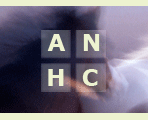
|
 |
||||||||||||||||||||||||||||||||||
Boa Horse Boot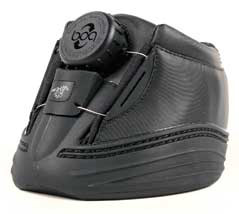
The Boa Horse Boot™ uses the unique Boa Lacing System™ which is based on the design used in snowboard boots. This makes them very easy to put on and take off and allows fine adjustments to be made. They are robustly made using leather and have a urethane sole and are a bit less bulky than the Old Macs. The breakover is fairly good althought it's a good idea to rasp it wider ie further out to each side, and they have good traction. I have one pair of these boots which I like, although they can be tricky to deal with when they have been in muddy water as the dial and cap can be hard to grip. Also they are easy to over tighten which will cause bruising under the dial on the front hoof wall and coronet (there is a pad that you can buy to prevent this). I have had my pair for over a year (although I don't use them that often) and so far they show no signs of wear. Boa Horse Boot Sizing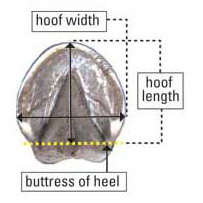
It is important to match the width and length of the hoof to the Boa Horse Boot™ size. The front hooves of most horses tend to be more round and wider than the hind hooves. The best fit may require a smaller size for the hind. How to get the correct size boot for your horse:
Boa Horse Boot FittingPrepare the hoof: Thoroughly clean hoof with hoof pick. Putting on the Boot: Remove the front shield cap by turning counter-clock wise. Pull the dial on the Boa Lacing System™ away from the boot until you feel it release. Spread the boot open with your hands. Important: Always turn the gear dial CLOCKWISE....forcing the dial in a counter-clockwise direction will destroy the gear mechanism. Slip the Boa Horse Boot over the hoof, making sure the toe of the hoof is as far forward as possible and the boot is started on straight. Use the pull tab to help pull the boot on all the way. Place horses hoof on the ground to set heel. 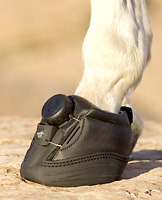
Tighten the Boa Lacing System™: Push the dial down until you feel it lock and begin to tighten by turning clockwise. The boot will begin to tighten and close around the hoof and hairline. Continue to tighten until a finger can be snugly slipped between the collar of the Boa Horse Boot™ and the hairline. Don't overtighten. Important: Always turn the gear dial CLOCKWISE....forcing the dial in a counter-clockwise direction will destroy the gear mechanism. Place the shield cap on the boot and fasten it by twisting 90 degrees. You will feel the cap go through a series of clicks then stop. Do not force the cap past the last clicks. Do not use the Boa Horse Boot™ without the shield cap. Replacement caps are available for purchase. A properly applied Boa Horse Boot™ will be snug, but you should be able to fit a finger between the collar of the boot and the hairline. Important: After you fit the Boa Horse Boot™ and the horse has had a chance to move around, tighten the Boa dial an additional ¼ turn. Make sure the boots are still fitted squarely and securely on the hoof. Make sure the Boa Horse Boot™ has not twisted to the side. If the boot has twisted to the side, it is either too large or needs to be tightened. Discontinue use if the boot continues to twist. Boots that twist can cause damage to the hoof and soft tissue areas.
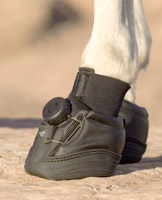
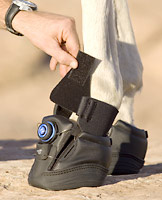
Boa Gaiters and Front Dial Pads are also available. For more information visit
EasyCare
|

Veterinary Secrets Revealed - Quick and Simple Pet Health Methods You Can Use To Heal Your Pets At Home And Extend Your Pet's Life (click on image above) |
||||||||||||||||||||||||||||||||||
|
|
|||||||||||||||||||||||||||||||||||
|
Did this page help you?
Please consider making a donation to help me keep this site going - donations over $10 get a free ANHC ebook.
| Homepage | Natural Health | Natural Lifestyle | Natural Hoofcare | Natural Horsemanship |
Copyright©
2008. All rights reserved. No part of this website may be reproduced without the written permission of the publisher and/or authors. The information contained within these pages is intended for educational purposes only, and not for diagnosing or medicinally prescribing in any way. Readers are cautioned to seek expert advice from a qualified health professional before pursuing any form of treatment for their animals. Opinions expressed herein are those of the authors and do not necessarily reflect those of the publisher.
Website designed and maintained by Design Image |
|||||||||||||||||||||||||||||||||||






